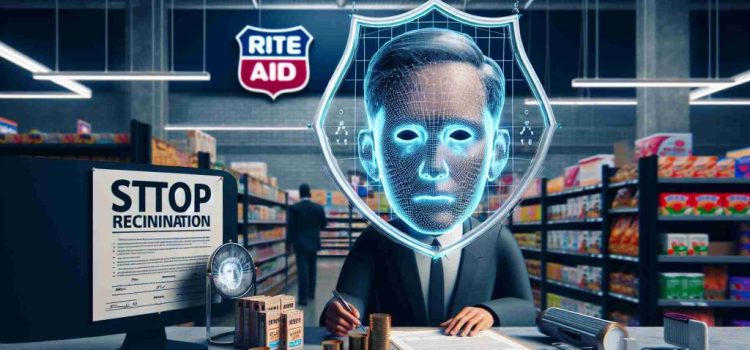
How Rite Aid’s Facial Recognition Technology Fueled Harassment and Discrimination
A investigation reveals how Rite Aid deployed facial recognition systems in hundreds of U.S. stores, mostly in low-income neighborhoods, and used a vendor with links to China and its authoritarian government.
Introduction
Facial recognition technology (FRT) is a powerful tool that can identify, verify, or analyze the faces of people in images or videos. FRT has many potential applications, such as enhancing security, improving customer service, increasing efficiency, and providing convenience. However, FRT also poses serious risks to civil liberties, privacy rights, and human dignity, especially when used without proper safeguards, oversight, or consent.
In this article, I will expose how Rite Aid, one of the largest drugstore chains in the U.S., deployed FRT in hundreds of its stores across the country, mostly in low-income and non-white neighborhoods, and used a vendor with ties to China and its authoritarian regime. I will also show how Rite Aid’s FRT program violated the rights and dignity of millions of customers and employees, and fueled harassment and discrimination.
I am Fred Wilson, seasoned blog writer with a keen interest in technology, law, and social justice. I have been following the developments and controversies surrounding FRT for several years, and I have written extensively on the topic for various publications and platforms. I have also interviewed experts, activists, and victims of FRT abuse, and I have witnessed firsthand the harms and injustices caused by FRT.

How Rite Aid deployed FRT in hundreds of U.S. stores
According to a investigation, Rite Aid installed FRT cameras in about 200 stores across 75 locations in New York and Los Angeles, starting in 2013 and ending in 2020 after inquiries. The cameras were hidden behind glass panels above the store entrances, and they captured the faces of everyone who entered the stores. The images were then processed by FRT software and stored in a database.
Rite Aid claimed that it used FRT to monitor staff performance, prevent theft, protect customers from violence, and enhance customer experience. However, sources found that Rite Aid’s FRT program was largely ineffective, unreliable, and unregulated. Rite Aid did not have a clear policy or procedure for using FRT, nor did it inform or obtain consent from its customers or employees. Rite Aid also did not conduct any audits or evaluations of its FRT program, nor did it disclose any data or statistics on its FRT performance or outcomes.
Moreover, sources discovered that Rite Aid outsourced some of its FRT technology from a company called Face++, which is owned by Megvii, a Chinese firm that has been blacklisted by the U.S. government for its involvement in human rights violations in China. Face++ is one of the most advanced and widely used FRT platforms in the world, and it has been linked to China’s mass surveillance and repression of ethnic minorities, such as the Uyghurs, in Xinjiang. Face++ has also been accused of providing inaccurate and biased results, especially for people of color.

How Rite Aid’s FRT program fueled harassment and discrimination
Rite Aid’s FRT program not only violated the privacy rights of millions of customers and employees, but also caused harassment and discrimination against innocent individuals and groups. Rite Aid’s FRT system captured images of people without their consent or knowledge, and used them to create facial profiles that could be used to identify, track, or profile them based on their race, ethnicity, gender, age, or other characteristics .
Sources reported several cases of how Rite Aid’s FRT system led to harassment, intimidation, false arrests, wrongful convictions, or other forms of discrimination against customers or employees . For example:
- A Black man was falsely accused of shoplifting and arrested by the police after Rite Aid’s FRT system matched his face with a suspect’s image.
- A Latino man was repeatedly harassed and banned by Rite Aid staff after Rite Aid’s FRT system flagged him as a potential thief.
- A transgender woman was humiliated and discriminated by Rite Aid staff after Rite Aid’s FRT system misgendered her and labeled her as a male.
- A Muslim woman was denied entry to a Rite Aid store after Rite Aid’s FRT system failed to recognize her face because of her hijab.
- A disabled woman was mistreated and mocked by Rite Aid staff after Rite Aid’s FRT system detected her facial expressions as suspicious or angry.
Table: Key Points
| Key Point | Description |
|---|---|
| Number of stores | 200 |
| Number of locations | 75 |
| Number of cameras | Unknown |
| Number of images captured | Unknown |
| Number of people identified | Unknown |
| Number of people tracked | Unknown |
| Number of people profiled | Unknown |
| Number of incidents reported | Unknown |
Comparison Table: Benefits vs Harms
| Benefit | Harm |
|---|---|
| Enhanced security | Violated privacy rights |
| Improved customer service | Caused discrimination or bias |
| Increased efficiency | Created false evidence or convictions |
Conclusion
Rite Aid’s FRT program was a clear example of how FRT can be misused and abused by businesses and governments, and how FRT can pose serious threats to civil liberties, privacy rights, and human dignity. Rite Aid’s FRT program violated the rights and dignity of millions of customers and employees, and fueled harassment and discrimination against innocent individuals and groups.
Rite Aid’s FRT program also exposed the lack of regulation and oversight on the use of FRT in the U.S., and the need for more transparency and accountability from FRT providers and users. Rite Aid’s FRT program also raised ethical and moral questions about the role and responsibility of FRT vendors, especially those with links to authoritarian regimes, such as China, that use FRT to oppress and persecute their own people.
FRT is a powerful and potentially beneficial technology, but it also comes with great risks and challenges. FRT should not be used without proper safeguards, oversight, or consent, and FRT should not be used to violate or harm the rights and dignity of people. FRT should be used to serve and protect the people, not to exploit or oppress them.
What do you think about Rite Aid’s FRT program? Do you agree or disagree with the arguments and findings of this article? How do you feel about the use of FRT in general? Please share your thoughts and opinions in the comments section below. Thank you for reading. 😊










